Whether you’re a master gardener or a botanical layperson, it’s easy to see that a dogwood is very attractive. Unfortunately, a plethora of pests can also find that same Cornus to be quite appealing.

We link to vendors to help you find relevant products. If you buy from one of our links, we may earn a commission.
A person may snap a photo or just take in the view, but pests tend to show their appreciation in more… malevolent ways.
From covering the surface of the tree to consuming its tissues outright, a pest will take advantage of a dogwood’s vulnerability and leave the tree looking damaged or sick.
“But how do I prevent this?” “How can I deal with an infestation-in-progress?” “Is all hope for my dogwoods lost?”
The hows of pest prevention and management are covered in this guide. As for the hope?
After absorbing the info provided here, you’ll be well-equipped to give your dogwoods a fighting chance, I can promise you that.
Here are those pesky foes that you’ll learn about up ahead:
7 Common Dogwood Pests
Before we begin, it’s important to reiterate that a healthy dogwood is more resilient against pests than an unhealthy one.
Therefore, you should strive to cultivate and care for your dogwoods as healthfully as possible. For a reduced risk of infestation, try your darndest to give a dogwood exactly what it requires for optimal health.
An added plus of preventing pests? They can’t vector diseases that could harm your dogwoods. Talk about a two-for-one!
1. Dogwood Borers
When we talk about dogwood borers, we’re referring to the larval form of Synanthedon scitula.
Entering the tree through wounds or other bark openings, the larvae leave sawdust-esque frass in their wake as they feed on the inner bark and cambium.
This feeding can leave the tree in dire straits: leaves can redden and prematurely drop, bark near the borers’ entry points sheds off, and branches often die as the cambium is destroyed.
Young trees can perish within a season or two, while more mature trees can survive, albeit with rough knots and reduced vigor.
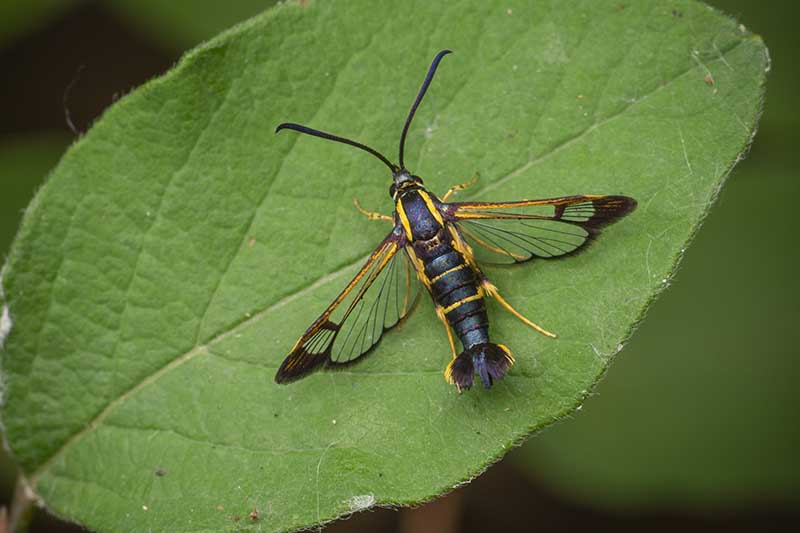
These larvae are a bit over half an inch long, with a reddish-brown head and a whitish to cream-colored body.
The clear-winged, wasp-like adult moths come in at half an inch in length, with a yellow-banded and blueish-black body.
Over a several-month period from spring to fall, the female adults lay eggs on the bark, which sets the stage for the larvae to hatch, enter the tree through its openings, feed, overwinter in their feeding tunnels, and then feed again before they pupate.
Proper cultivation and wound avoidance will help prevent infestations of these pests.
For management of a current infestation, prune away affected branches in late winter, when the moths are inactive.
You can also insert a skinny wire into the borers’ feeding tunnels, which will crush them.
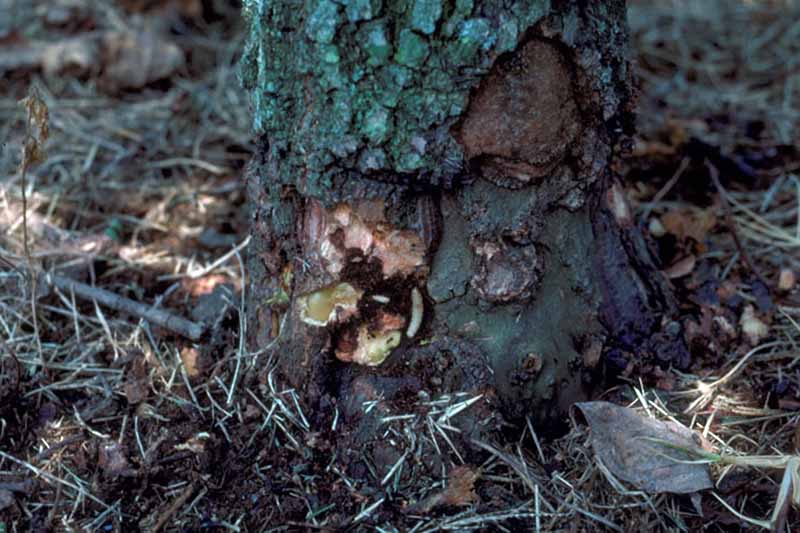
For more drastic control, you can spray permethrin on the trunk, root collar, primary branches, and bark wounds. Begin in early May, and reapply every three weeks up to four times.
Dead trees should be excavated and pitched. Feel free to try again with hybrid crosses of C. florida and C. kousa from the Stellar series, which are highly resistant to dogwood borers.
2. Dogwood Club Gall Midges
Resseliella clavula is a small, yet significant foe of the dogwood.
The adult fly, about a sixteenth of an inch long, lays eggs within a dogwood’s tiny terminal foliage in late spring.
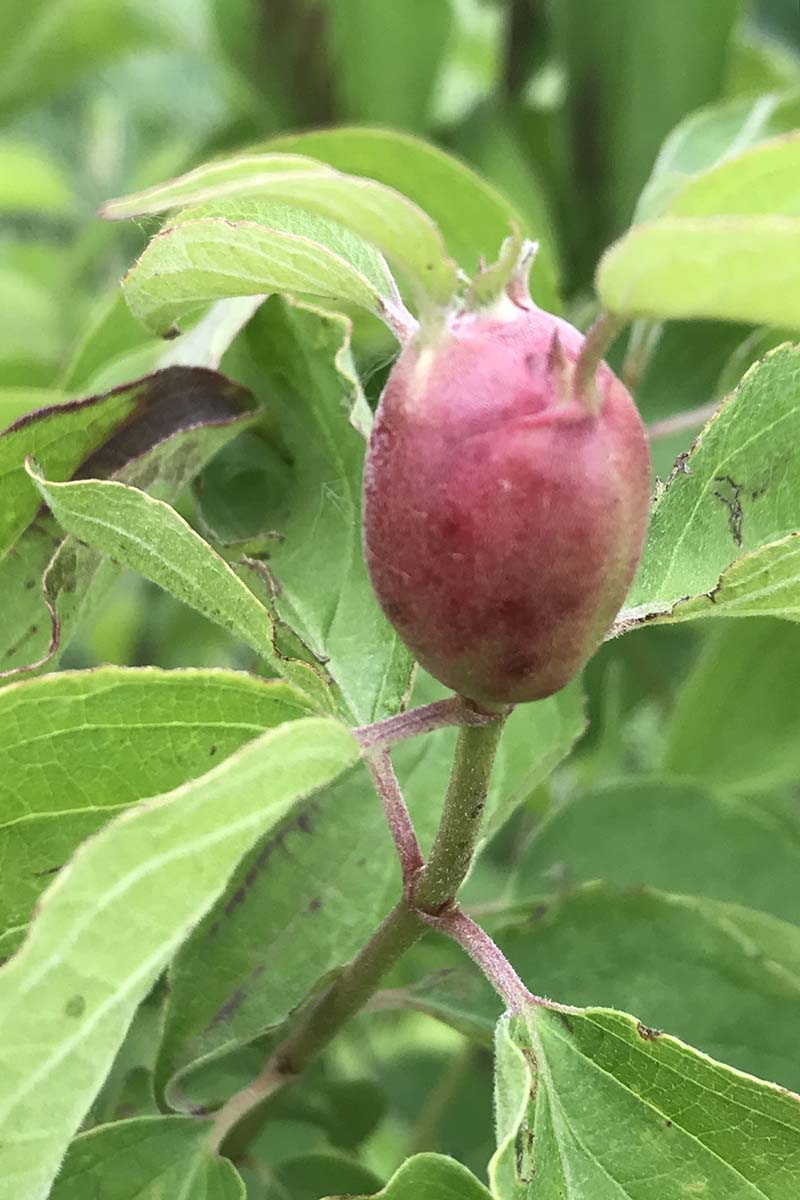
Upon hatching, the orange larvae consume their way through shoots, and tubular, swollen galls form in response along stems or at stem tips.
Beyond the gall on a shoot, stem tissue can die, while leaves can wilt and warp. With a large midge infestation, a tree can be left deformed.
Management-wise, your best bet is to prune away and destroy any infested shoots several inches below the gall.
3. Dogwood Sawflies
Just like with the above-described pests, the danger of a Macremphytus tarsatus lies in its young.
Emerging in late spring, the slender black adults lay up to a hundred eggs in a single leaf, inserting them next to the leaf veins in rows of small brown bumps.
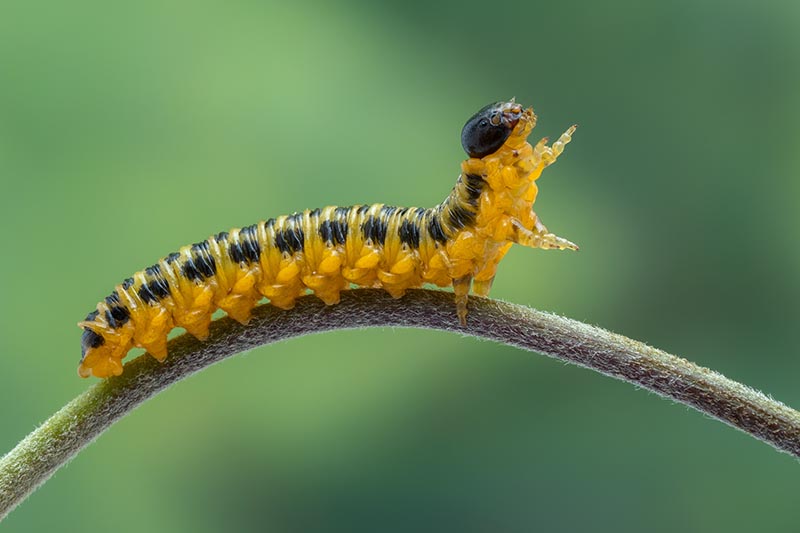
The color of the caterpillars that hatch out varies, depending on their developmental stage.
First-instar caterpillars are small and translucent yellow, second-instar caterpillars are coated with a white wax, and final-instar caterpillars are a black-spotted yellow.
As you’ve probably gleaned from Eric Carle’s “The Very Hungry Caterpillar,” larvae such as these will eat a lot of leaf tissue, often to the point of significant defoliation.
After they’ve molted into their final larval stage, the caterpillars will cease eating and burrow into wood for overwintering before they emerge as adult sawflies come spring.
When the caterpillars are less than an inch long, sprays of insecticidal soaps or horticultural oil can be effective.
Otherwise, you should stick with manual removal: either dislodge them by shaking the tree or remove them by hand. Upon removal, drown the pests in soapy water or crush them beneath your heel.
For a horticultural oil concentrate that’s approved for organic gardening, Monterey sells some in quart- and gallon-sized bottles via Arbico Organics.
4. Dogwood Twig Borers
Also known as Oberea tripunctata, the dogwood twig borer doesn’t exclusively attack species of Cornus – willow, viburnum, and azalea are but a few of its other targets.
A bit over half an inch in length, adult twig borers are skinny, cylindrical, brownish-orange beetles with long, dark antennae and dark brown to black heads.
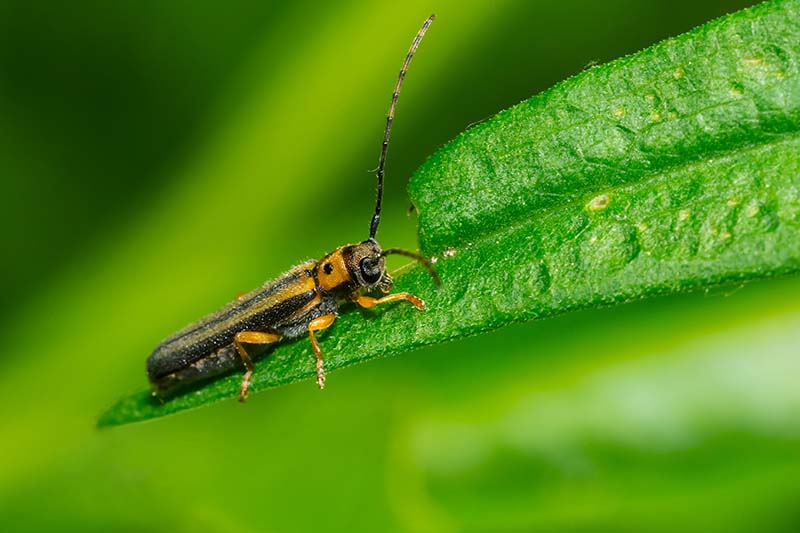
The visibly segmented larva measures up to an inch long, with a brown head and pale yellow body.
In late spring, the adults chew twin lines of holes around the tips of newly-grown stems, and lay an elongated egg in between the girdled rings.
Upon hatching, the larvae bore their way further into the stems, leaving a series of holes running down the stem’s side as they feed.
This feeding wilts and kills the foliage above the tunneling, and the stem can even break off at points where the larvae girdle the stem from the inside.
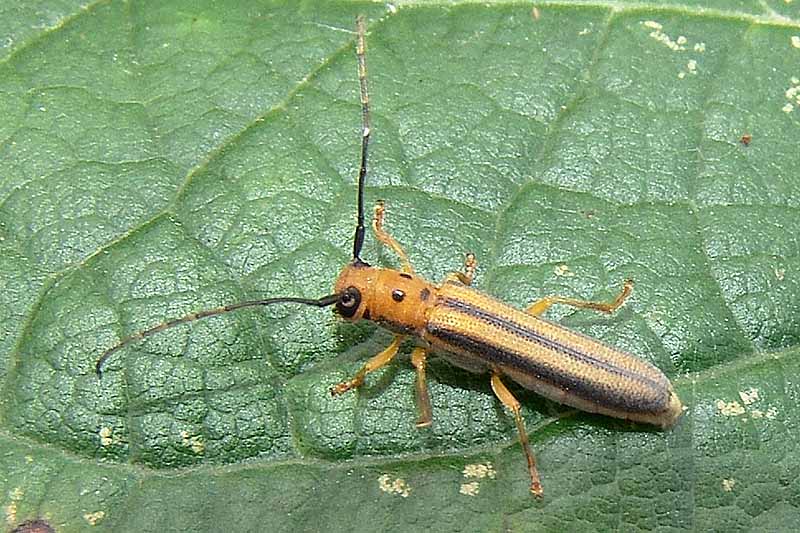
Come spring, after overwintering in the hollowed-out stems, the larvae either continue to feed for another year or pupate into the adult stage. By late spring, the adults emerge, and the cycle continues.
Sprays of a pyrethroid insecticide in late spring can prevent these pests from laying eggs, while stems that have been tunneled into should be pruned in early summer when you notice the resultant leaf wilt.
Make your pruning cuts below the larva’s current location within the twig, and burn your pruned twigs to prevent a twig borer comeback.
5. Flatheaded Appletree Borers
Upon first seeing what Chrysobothris femorata looks like, I was reminded of the infamous chestbursters from the “Alien” franchise.
With a tannish-white, segmented body and a relatively wide thorax below its black head, this pest can tunnel its way through a dogwood’s tissues like a Xenomorph larva through Executive Officer Kane.
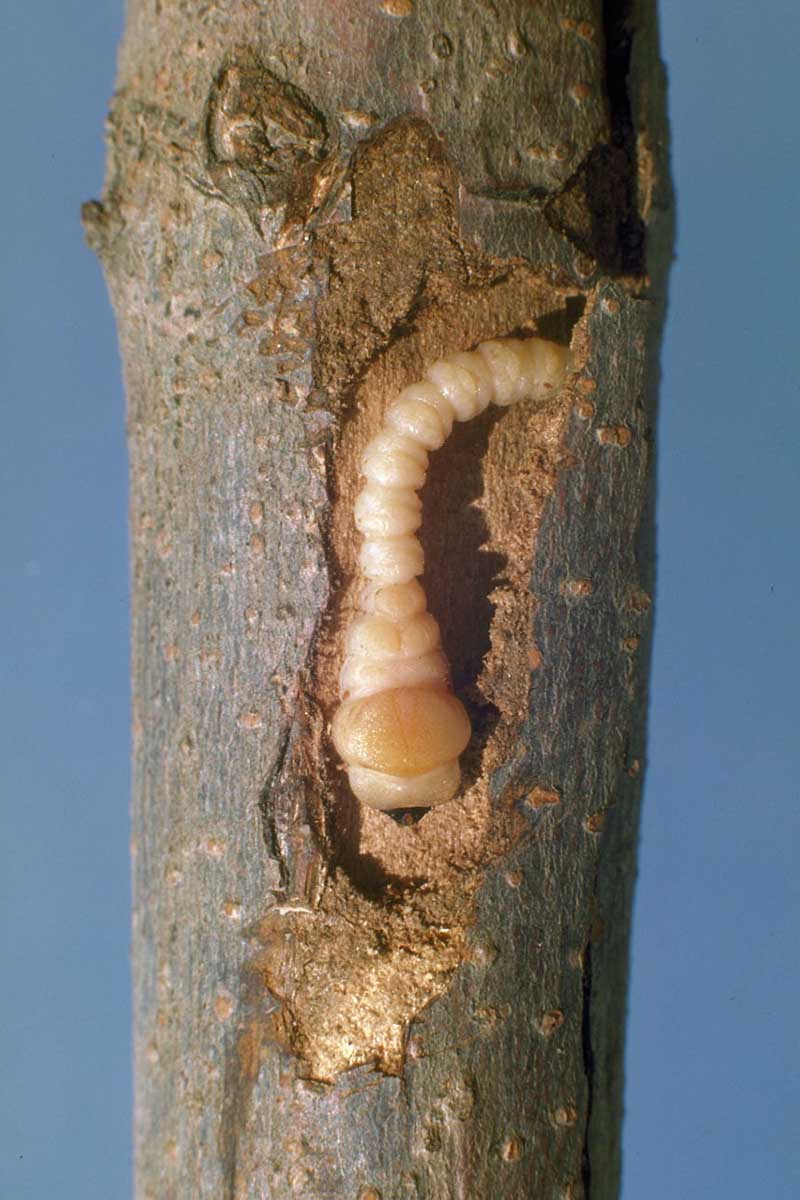
After the sunflower seed-esque adult beetles lay their eggs in the tree’s bark throughout the summer, the larvae emerge from the eggs and eat their way through the bark and cambium, creating galleries that girdle the tree and disrupt vascular tissues.
Infestation symptoms manifest as foliar wilt and necrosis, branch dieback, and darkened bark that secretes a nasty white liquid.
Additionally, the feeding tunnels within the tree can become sunken and apparent, and the bark above can die and fall away.
Small young trees can easily die from an infestation of these pests, the health and appearance of more mature trees can take a hit, and afflicted specimens can be left especially vulnerable to pathogens.
These pests are particularly fond of unhealthy trees, so it’s extra important to cultivate your dogwoods properly and protect them from injury.
Be sure to prune dead and damaged branches, which are potential entry points for the pests.
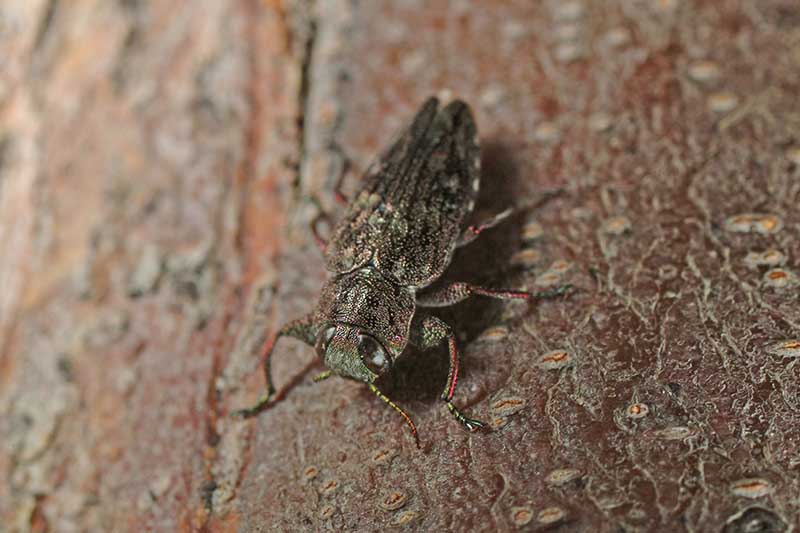
Wrapping dogwood trunks with a protective covering from March to September can deter egg-laying.
Many materials work, such as mosquito netting, fine-mesh hardware cloth, and even layered newspaper!
Upon noticing the adult beetles, spraying the trunk and major branches with a pyrethroid insecticide can be helpful.
This will control the adults but not the burrowing larvae, so it pays to strike fast.
For heavily-infested trees, a prompt removal and burning is in order. It may be tragic, but at least any of the infesting pests will be killed as well.
6. Vertebrates
A plant that draws wildlife into your garden isn’t always a bad thing, as a population of diverse species can indicate a healthy ecosystem.
However, if said wildlife munches on foliage, or consumes fruit that you yourself intended to harvest, then that’s when you should consider taking action.
A variety of critters can feast on dogwoods.
Foxes, mice, skunks, chipmunks, black bears, songbirds, turkeys, beavers, deer, and rabbits consume the fruits, while the latter three also browse the leaves and young sprouts.
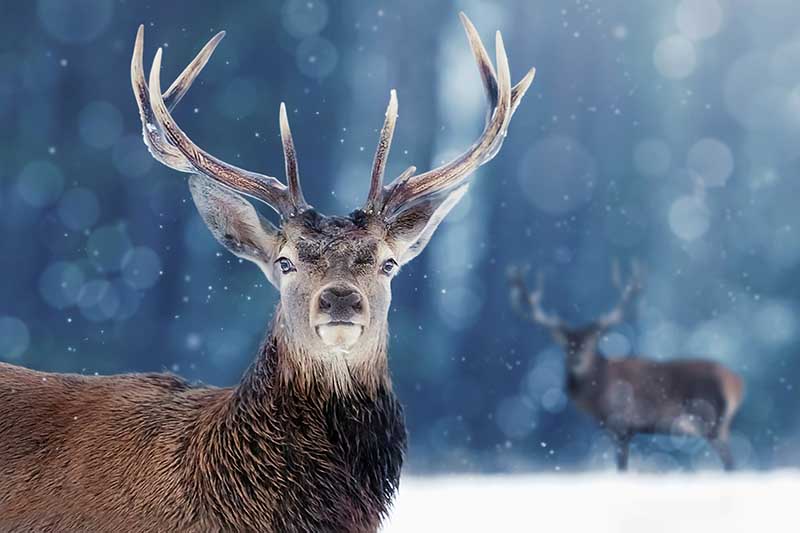
While managing creepy-crawly pests is usually a cold-blooded and murderous practice, it’s important to try to control most higher forms of life with a bit of empathy, via nonlethal methods.
Treating your backyard like it’s open season can land you in legal trouble if you harm any protected species, not to mention turn your stomach.
Birds are best managed via scare tactics that are cycled through weekly, so they don’t grow wise to your tricks.
Reflective surfaces, balloons with eyes drawn on them, scarecrows, rubber snakes, and fake birds of prey – visually, you have plenty of options.
Sound-wise, loud noises are the key, whether it’s with wind chimes, banging pots and pans together, or even something higher-tech like a noise machine.
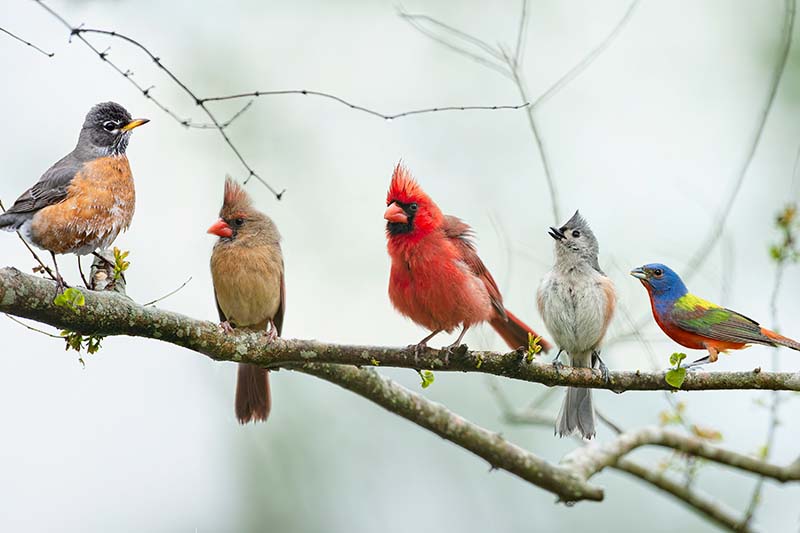
You’ll need some physical deterrents for the non-fliers, though.
Small mammals like squirrels, beavers, and foxes typically require protection via a per-planting perimeter of ultra-fine chicken wire or flimsy hardware cloth, buried a couple inches below the surface to deter tunneling.
Larger mammals such as deer and black bears need larger, potentially electrified fencing around your entire property.
For any of the aforementioned critters, you can always supplement piecemeal with some species-specific repellents, depending on which particular ones plague your dogwoods.
7. Scale Insects
A variety of scale insects can infest your dogwoods, such as armored oystershell scale and brown soft scale. Scale vary in color, and are small, oval-shaped pests with no visible legs.
Soft scale possess a thick, waxy coating, measuring an eighth- to a quarter-inch long.
With a smooth, cottony, or waxy coating, these pests excrete honeydew: a damaging, ugly, and ant-attracting substrate for sooty mold.
Armored scale species are smaller, coming in at less than an eighth of an inch long. Flaunting their trademark hardened shells, these pests lack the honeydew excretion of their soft relatives, thankfully.
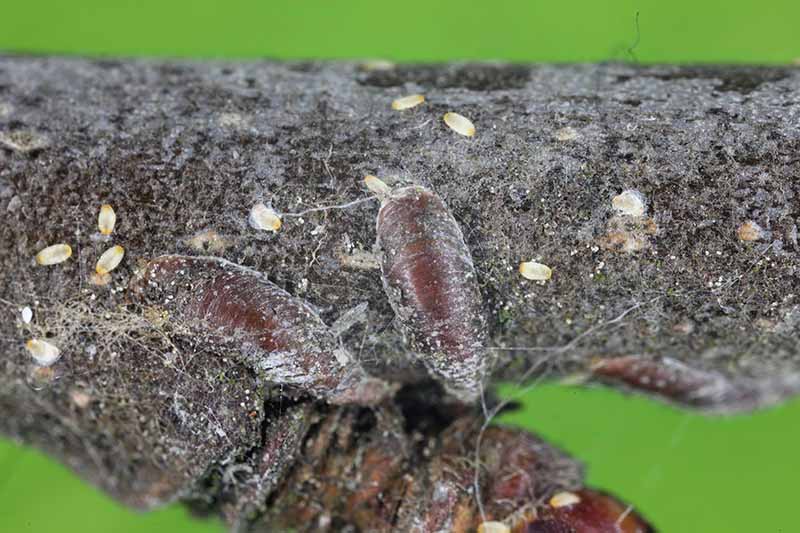
With populations that can rapidly grow after a couple seasons, scale insects feed on the sap that they extract with their piercing-sucking mouthparts.
Infested dogwoods can suffer with chlorotic and prematurely-dropped leaves, heavily-infested shoots can perish, and the entire tree’s growth rate can significantly slow.
If small, isolated portions of the tree’s structure are densely packed with these pests, prune them away. Additionally, you can prune within the canopy to increase the penetration of hot sunlight.
Physically, you can spray the tree with strong bursts of water, or manually scrape away small pest infestations with a butter knife.
Thorough springtime applications of horticultural or neem oil, both before bud break and after flowering, can kill adults and eggs alike.
Parasitic wasps and ladybugs are effective predators of scale, and adding store-bought reinforcements to the already-present ones in your landscape can be a smart move.
But not always, as introducing non-native species – ladybugs in particular – can be harmful.
Learn more about scale insects and how to deal with them in our guide.
Dog-Tired of Dogwood Pests?
Then you’ve got a true friend in this guide. Feel free to refer back to it whenever you wish to refresh your dogwood pest combat skills!

But just as black belts hone their abilities beyond the point of mastery, you must do so with your pest control management.
One wonderful aspect of gardening is that you’ll never know it all, so the educational journey is sure to never end!
Have pest control questions? Wish to share the details of your management successes and failures? Put ’em into the comments section below.
Want to learn more about dogwoods? We’ve got you covered:
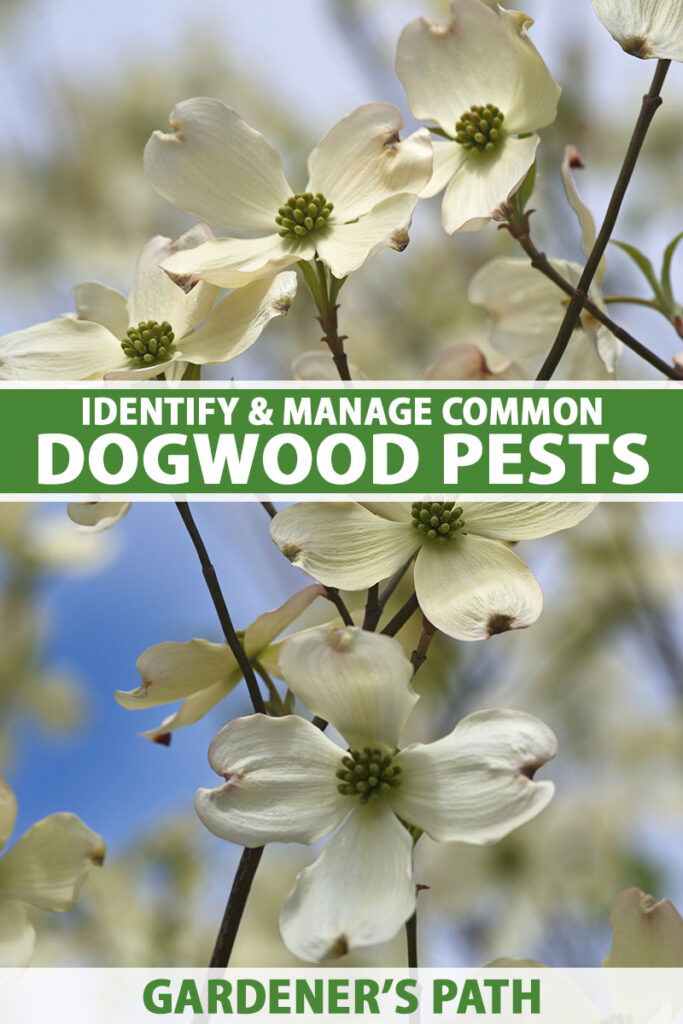
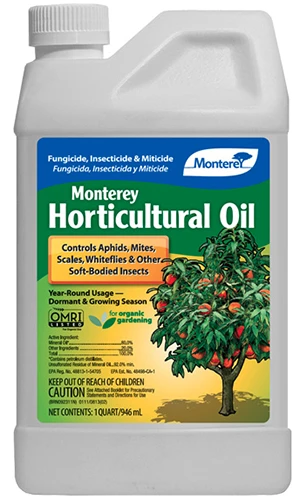
My first Dogwood planted thus Spring. Whats happening? I sprinkled an antifungal powder which you’ll see in the pictures. Leaves started to get the holes, brown squiggly lines and now this really bad leaf.
Any advice?
Hi Pam, it seems your photos didn’t upload, could you try again?
Hi Pam, could you try uploading your photos again?
The images arent attaching:-( I’ll be going to the nursery tomorrow so Ill ask them. Thank you for responding.